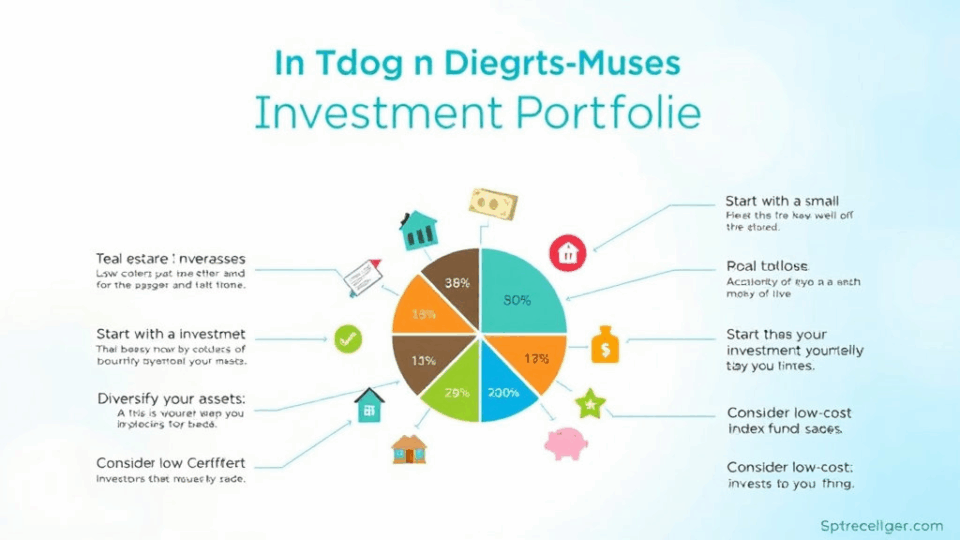
How to Build a Beginner-Friendly Investment Portfolio
Set Clear Investment Goals

Before you start building your investment portfolio, it’s essential to take a step back and define your goals. Clear investment goals act like a roadmap, helping you stay focused and make informed decisions along the way. Ask yourself: What are you investing for? Is it a comfortable retirement, buying a home, funding your child’s education, or simply growing your wealth over time?
Once you know your ‘why,’ you can determine your time horizon (how long you plan to invest) and your risk tolerance (how much risk you’re comfortable taking). For example, if you’re saving for retirement 30 years from now, you might be able to take on more risk than someone saving for a house in five years.
Setting specific, measurable, and realistic goals will not only keep you motivated but also help you choose the right investment vehicles—like stocks, bonds, or ETFs—that align with your needs. Remember, your goals may evolve over time, so it’s okay to revisit and adjust them as your life changes.
Taking the time to set clear investment goals is one of the most powerful steps you can take toward financial well-being. It brings clarity, confidence, and purpose to your investment journey.
Diversify Across Asset Types

When you’re just starting your investment journey, one of the most important principles to understand is diversification. Simply put, diversification means not putting all your eggs in one basket. By spreading your investments across different asset types—like stocks, bonds, real estate, and even cash—you reduce the risk of losing everything if one market sector performs poorly.
For example, stocks can offer high returns but are often volatile. Bonds, on the other hand, tend to be more stable and provide steady income. Real estate can offer both income and appreciation, while holding some cash ensures you have liquidity for emergencies or new opportunities.
A well-diversified portfolio helps smooth out the ups and downs of the market. If one asset class dips, others may rise or remain stable, helping to protect your overall investment. This approach not only reduces risk but also increases your chances of achieving long-term financial goals.
So, as a beginner, focus on building a balanced mix of assets that align with your risk tolerance and time horizon. Over time, you can adjust your portfolio as your goals and financial situation evolve. Remember, diversification is not just a strategy—it’s a mindset that encourages resilience and long-term thinking.
Manage Risk Like a Pro

When you’re just starting out with investing, managing risk might sound intimidating—but it doesn’t have to be. Think of risk management as your financial safety net. It helps protect your money from unexpected market swings and keeps your investment journey on track.
Start by understanding your risk tolerance. Are you comfortable with short-term ups and downs, or do you prefer a more stable ride? Knowing this will help you choose the right mix of assets—like stocks, bonds, and cash—that align with your comfort level.
Next, diversify your portfolio. This means spreading your investments across different industries, asset types, and even geographic regions. That way, if one area underperforms, others can help balance things out.
Another smart move is to invest consistently over time, a strategy known as dollar-cost averaging. It helps reduce the impact of market volatility and removes the pressure of trying to time the market perfectly.
Finally, review your portfolio regularly. Life changes, and so do markets. Make sure your investments still match your goals and risk tolerance.
By taking these simple steps, you’ll be managing risk like a pro in no time—building a portfolio that’s not only beginner-friendly but also built to last.
Get Expert Help When Needed

Building an investment portfolio as a beginner can feel overwhelming at times — and that’s completely okay. You don’t have to do it all alone. Seeking expert help is not a sign of weakness; it’s a smart move that can save you time, money, and stress in the long run. Financial advisors, certified planners, and even robo-advisors can provide personalized guidance based on your goals, risk tolerance, and current financial situation. They can help you avoid common mistakes, understand complex investment options, and create a balanced portfolio that grows with you. Whether you choose a one-time consultation or ongoing support, getting professional advice ensures you’re making informed decisions. Remember, even the most seasoned investors rely on expert insights — and you deserve that same support on your journey.








답글 남기기